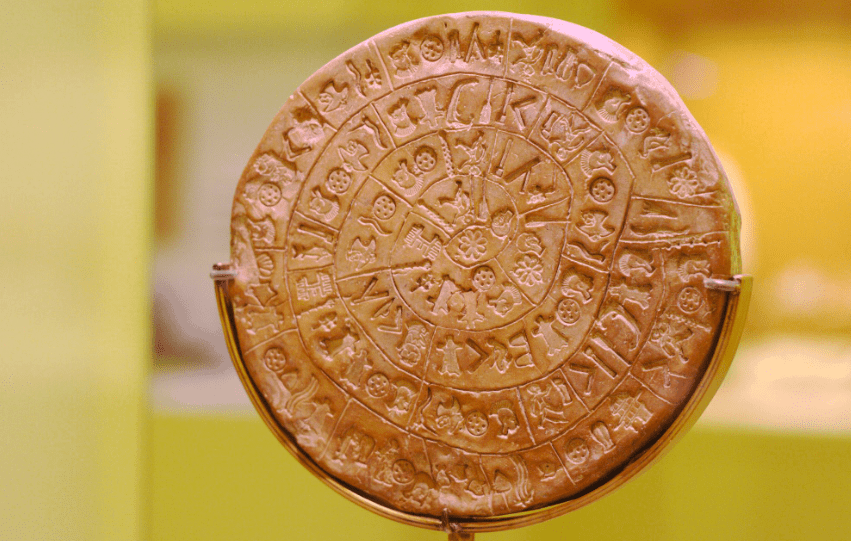Scientists have been trying to decipher the mysterious “Phaistos Disk” since the 4,000-year-old clay disk was discovered in 1908 in Crete.
While there have been claims of deciphering the Phaistos Disc, including one in 2018 by Dr. Gareth Owens, it's important to understand that the mystery of the Phaistos Disc remains largely unsolved.
Here's what we know:
- The Artifact: The Phaistos Disc is a circular clay disc covered with inscribed symbols, discovered in 1908 in Crete. The symbols are unique and unlike any known writing system.
- Age and Origin: Dating to around 1700-1100 BC, it likely originates from the Minoan civilization, a Bronze Age culture on Crete.
- Proposed Solutions: Over the years, numerous attempts have been made to decipher the disc, with interpretations ranging from religious texts to calendar records. However, none have gained widespread acceptance due to inconsistencies and lack of supporting evidence.
- Dr. Owens' Claim: In 2018, Dr. Owens claimed to have deciphered 99% of the text

Linguist Dr Gareth Owens says he has now finally managed to decipher 99 per cent of the disc. Dr Owens has been living in Crete for the past 35 years and for 30 of those years has worked in the Technical University of Crete, devoting his research to deciphering the disc. He managed to do so in collaboration with Professor John Coleman, from Oxford.
The Phaistos Disc is an enigma, a circular clay disc covered with inscribed symbols on both sides that are unlike any signs in any writing system known.
“We are reading the Phaistos disc with the vocal values of Linear B and with the help of comparative linguistics, ie comparing with other relative languages from the Indo-European language family. Reading something, however, does not mean understanding,” Owens said in an interview with the Athens-Macedonian News Agency on the occasion of his speech to the National Research Foundation on Wednesday.
“The Disc of Phaistos is written in the Minoan script that records the Minoan language. This is the best sample of ‘Cretan hieroglyphics’, always in quotes, because it is not the writing system of ancient Egypt. The name is wrong. The scripts of the Phaistos Disc is also Minoan Linear A,” he added.
Moreover, he noted that the sound syllables from the disc have been recorded “because I want people to hear them. Minoan is not a dead language. Knossos, Phaistos, Crete are Minoan words, as well as many more that are still used today.”


